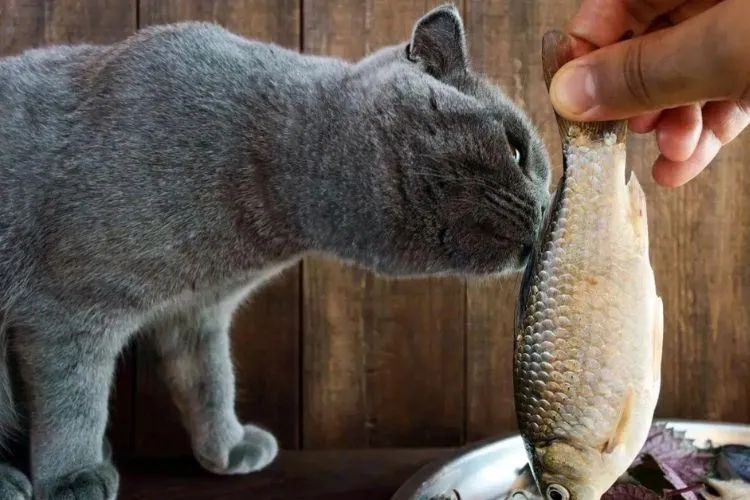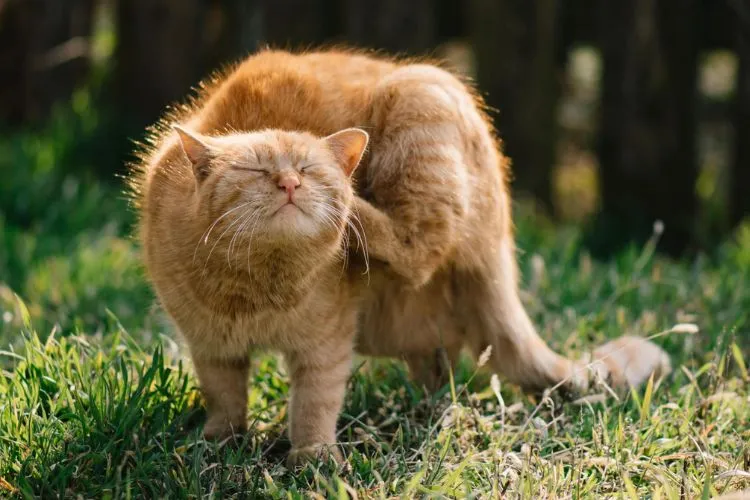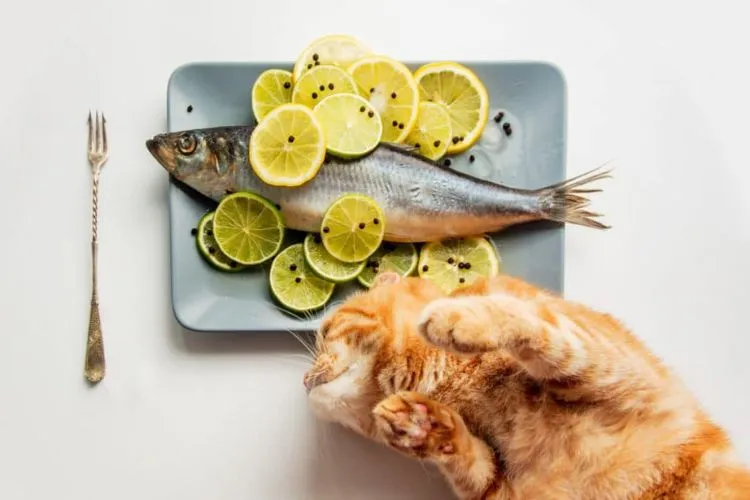When it comes to ensuring the health and well-being of our beloved feline friends, nutrition plays a vital role.
As responsible cat owners, we are often curious about the food options available for our furry companions, especially when it comes to introducing new protein sources into their diet.
One such protein source that raises questions is tilapia.
So, can cats eat tilapia?
In this comprehensive guide, we will explore whether cats can safely consume tilapia, the nutritional benefits it offers, the potential risks associated with it, and how to incorporate it into a cat’s diet.

🐾 Can Cats Eat Tilapia?
Tilapia is a freshwater fish known for its mild taste and nutritional profile. It is a great source of protein, which is essential for cats’ overall health.
Cats are obligate carnivores, and their bodies are designed to derive most of their nutrients from animal sources. Tilapia contains high-quality protein, making it a suitable protein option for cats.
🐾 Protein Content and Its Significance for Cats
Protein is a crucial component of a cat’s diet as it helps build and repair tissues, supports a strong immune system, and provides energy.
Tilapia offers a relatively high protein content, making it a valuable addition to a cat’s diet. Including protein-rich foods like tilapia can help meet a cat’s dietary requirements and ensure their overall well-being.
🐾 Omega-3 Fatty Acids and Their Benefits
Apart from protein, tilapia also contains omega-3 fatty acids. These essential fatty acids play a vital role in promoting a cat’s cardiovascular health, maintaining a shiny coat, and supporting brain functioning.

Including omega-3 fatty acids in a cat’s diet can help reduce inflammation, enhance cognitive function, and improve overall health.
🐾 Vitamins and Minerals in Tilapia
In addition to protein and omega-3 fatty acids, tilapia is also a source of various vitamins and minerals that are essential for a cat’s health. It contains vitamins B12 and D, as well as minerals such as selenium and phosphorus.
These nutrients support the proper functioning of a cat’s body, promote strong bones and teeth, support a healthy immune system, and aid in energy metabolism.
🐾 Safety Considerations
While tilapia can be a healthy addition to a cat’s diet, there are some safety considerations to keep in mind.
🐾 Raw vs. Cooked Tilapia for Cats
Feeding raw fish to cats can carry certain risks, including the potential for bacterial contamination and the presence of thiaminase, an enzyme that can break down thiamine (a B-vitamin).
Cooking tilapia helps eliminate these risks, making it a safer option for cats. Always ensure the fish is thoroughly cooked, boneless, and free from any seasonings, oils, or spices that could be harmful to cats.
Potential Risks and Allergies
Some cats may have allergies or sensitivities to certain proteins, including fish. When introducing tilapia or any new food to your cat, it’s essential to monitor them for any adverse reactions.

Watch for symptoms such as vomiting, diarrhea, excessive itching, or difficulty breathing. If you notice any of these signs, discontinue feeding tilapia and consult your veterinarian.
Suitable Portions and Moderation
While tilapia can be a healthy protein option for cats, it should be fed in moderation. A well-balanced diet for cats includes a variety of proteins, and tilapia can be part of that rotation.
Ensure portion sizes are appropriate for your cat’s size, age, and activity level. Moderation is key to maintaining a balanced diet and preventing any potential dietary imbalances.
Consulting with a Veterinarian
Before introducing tilapia or any new food into your cat’s diet, it is crucial to consult with your veterinarian. They can provide valuable guidance based on your cat’s specific needs, dietary requirements, and any pre-existing health conditions.
Your veterinarian can help you determine if tilapia is suitable for your cat and recommend appropriate portions to ensure a well-rounded diet.
🐾 Introducing Tilapia into a Cat’s Diet
If your veterinarian approves the inclusion of tilapia in your cat’s diet, it’s essential to introduce it gradually and monitor your cat’s response.

Gradual Transition and Monitoring
Start by incorporating small amounts of cooked, boneless tilapia into your cat’s regular meals. Monitor your cat’s stool consistency, overall health, and any changes in appetite.
Gradually increase the amount of tilapia over time, ensuring it suits your cat’s individual needs and preferences.
Mixing Tilapia with Other Cat-Friendly Ingredients
To make tilapia more enticing and nutritionally balanced, consider mixing it with other cat-friendly ingredients.
You can combine it with steamed vegetables like carrots or green beans, or even mix it with a small amount of commercially available high-quality cat food. Remember to maintain the appropriate protein-to-other ingredient ratio to ensure a well-balanced diet.
Incorporating Tilapia in Homemade Cat Food Recipes
If you prefer to prepare homemade cat food, tilapia can be incorporated into various recipes. However, it’s crucial to ensure the recipe meets all of your cat’s nutritional requirements.
Consult with a veterinary nutritionist or your veterinarian to develop a well-balanced homemade diet plan that includes tilapia as a protein source.
Alternatives to Tilapia
While tilapia offers a range of nutritional benefits, it’s essential to provide variety in a cat’s diet. Consider incorporating other fish options into your cat’s meal rotation.
Fish such as salmon, tuna, and sardines can provide additional nutritional benefits, including omega-3 fatty acids and vitamin D. Remember to follow the same safety considerations when introducing these alternatives.
🐾 Variety in a Cat’s Diet
Regardless of whether you choose to include tilapia or other fish options, it’s essential to provide variety in a cat’s diet.

This ensures they receive a wide range of nutrients, minimizes the risk of dietary imbalances, and keeps mealtime interesting for your feline companion.
Commercially available cat foods formulated with a variety of protein sources can also offer convenience and a balanced nutritional profile.
🐾 Balanced Commercial Cat Food Choices
If preparing homemade cat food or incorporating various protein sources seems challenging, commercially available cat foods can serve as a convenient and balanced option.
Look for high-quality cat foods with animal-based proteins listed as the primary ingredients. These foods often go through rigorous testing to ensure they meet all of a cat’s nutritional needs.
🐾 Frequently Asked Questions (FAQs)
It is generally safe to feed frozen tilapia to cats, provided it is cooked thoroughly. Avoid serving it raw due to the risk of bacterial contamination.
Feeding raw tilapia to cats is not recommended due to potential risks associated with bacterial contamination and thiaminase activity. Cooked tilapia is a safer option.
While fish can be a healthy addition to a cat’s diet, it is not recommended to feed fish as the sole protein source every day. Variety is key to a balanced feline diet.
Tuna can be given as an alternative to tilapia, but like any fish, it should be cooked thoroughly. Ensure it is boneless, as fish bones can pose a choking hazard.
Conclusion:
Incorporating tilapia into a cat’s diet can provide nutritional benefits, such as high-quality protein and omega-3 fatty acids.
However, it’s crucial to follow safety considerations, including cooking the fish thoroughly and monitoring your cat for any adverse reactions.
When it comes to a cat’s dietary choices, consulting with a veterinarian is essential to ensure a well-rounded and balanced diet that meets their individual needs.
By considering all these factors, you can make informed decisions about feeding tilapia to your feline companion and ensure their overall health and well-being.
